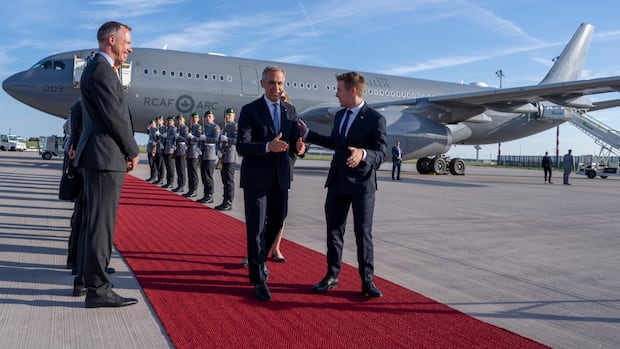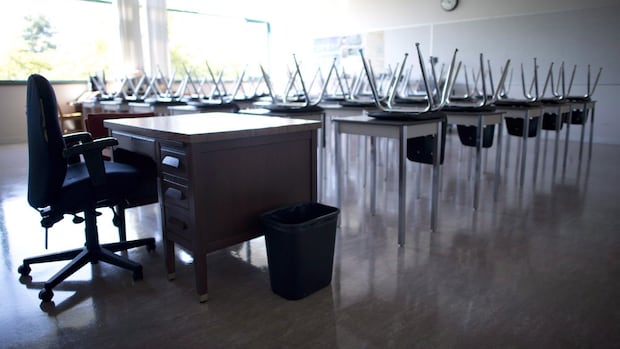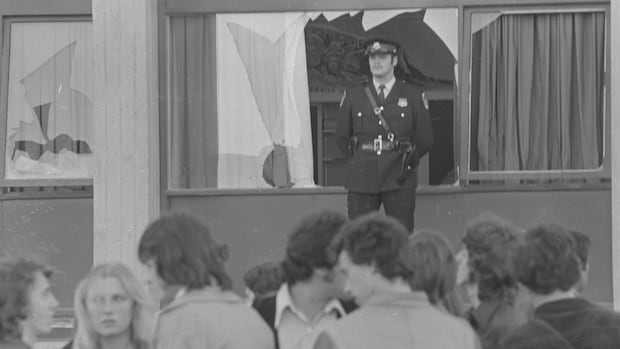As he delivered the hard sell pitch last spring for Canada to buy his submarines, Oliver Burkhard, the CEO Germany’s ThyssenKrupp Marine Systems (tkMS), used the phrase “strategic partnership” half a dozen times.
Canada would be part of “a family,” he said.
We will — perhaps — soon get a better sense whether that approach is music to the ears of Prime Minister Mark Carney and key members of his cabinet.
It was announced Tuesday that Canada had narrowed the list of contenders to build the navy’s new submarines to two bidders – TKMS and South Korea’s Hanwha Ocean Ltd.
The prime minister met German Chancellor Friedrich Merz and is slated to participate in a business roundtable with the goal of diversifying Canada’s trade and coming up with a critical minerals partnership.
However, as with many elements of his European trip this week, defence and security issues are near the top of Carney’s agenda.
The prime minister will tour the TKMS shipyard Tuesday afternoon.
Carney said he is committed to a fair transparent competition and plans to visit the Hanwha yard in South Korea this fall.
Federal officials, speaking on background, said the debate within the federal government is now whether to go the route of requesting full proposals – or straight into contract negotiations with a preferred bidder.
Hanwha submitted a detailed unsolicited bid for Canada’s consideration last March. TKMS – in it interview with CBC News – last spring said it had only answered the federal government’s request for information but provided fulsome responses.
Merz said Tuesday that he campaigned for Carney to visit the yard and that he believes drawing Canada into the submarine partnership with Norway is important for Transatlantic security.
In the high-stakes, multibillion-dollar gambit to replace Canada’s aging — and largely inoperable — Victoria-class submarines, the German-designed, Norwegian-partnered Type 212CD is perhaps the most well known and heavily marketed of the contenders.
Last spring on the margins of the Ottawa arms expo CANSEC, Burkhard, senior German defence official Jasper Wieck and Norwegian Capt. (N) Oystein Storebo all sat down with CBC News to discuss the TKMS information pitch, which had been submitted last year at the request of the Canadian government.
Shipyards in Sweden and Spain also responded to requests for information, but in a statement Joël Lightbound, the Public Works and Procurement Minister said the decision to narrow the field was informed by a thorough assessment of Canada’s submarine requirements, including construction and delivery timelines.

Canada is looking to buy 12 conventionally powered submarines.
Germany and Norway became involved several years ago in a joint venture to construct the Type 212CD, which is based on the well-established German Type 212A design.
Storebo, Norway’s program director of submarines, said the 212CD (CD refers to common design) was designed for operations in all oceans, notably the Arctic.
It was a necessity because Norway is an Arctic country. With its air-independent propulsion system, the diesel electric boat can stay submerged for more than three weeks, Storebo added.
The initial $8.1-billion (5.5-billion Euro) order was for six 212CDs — two for Germany and four for Norway. Each country is now planning to build more, bringing the total order up to 12 boats.
The German Navy will receive its first 212CD in 2028 while Norway is expected to be in the water the following year.
The TKMS pitch also involves a plan to construct a submarine maintenance facility in Canada, creating jobs for Canadians — an important condition the Liberal government has repeatedly underlined.
Burkhard, who praised the cost savings for Germany and Norway in terms of supply and maintenance, said if Canada were to join the program it’s possible the first Canadian boat could arrive in the 2032-33 timeframe.
Slipping into the production line at this point would likely involve redesignating one of the submarines already earmarked for either Germany or Norway.
“I think there are opportunities to debate if one of those is maybe the first Canadian one,” Burkhard told CBC News.
Although, he said, much depends on the Canadian government and how swiftly it moves.
Carney has suggested in the past that the government would like to have a decision on the submarine project by 2027.
The Type 212CD is a big boat. It is 73 metres in length, 2,800 tonnes when submerged and has eight torpedo tubes.







